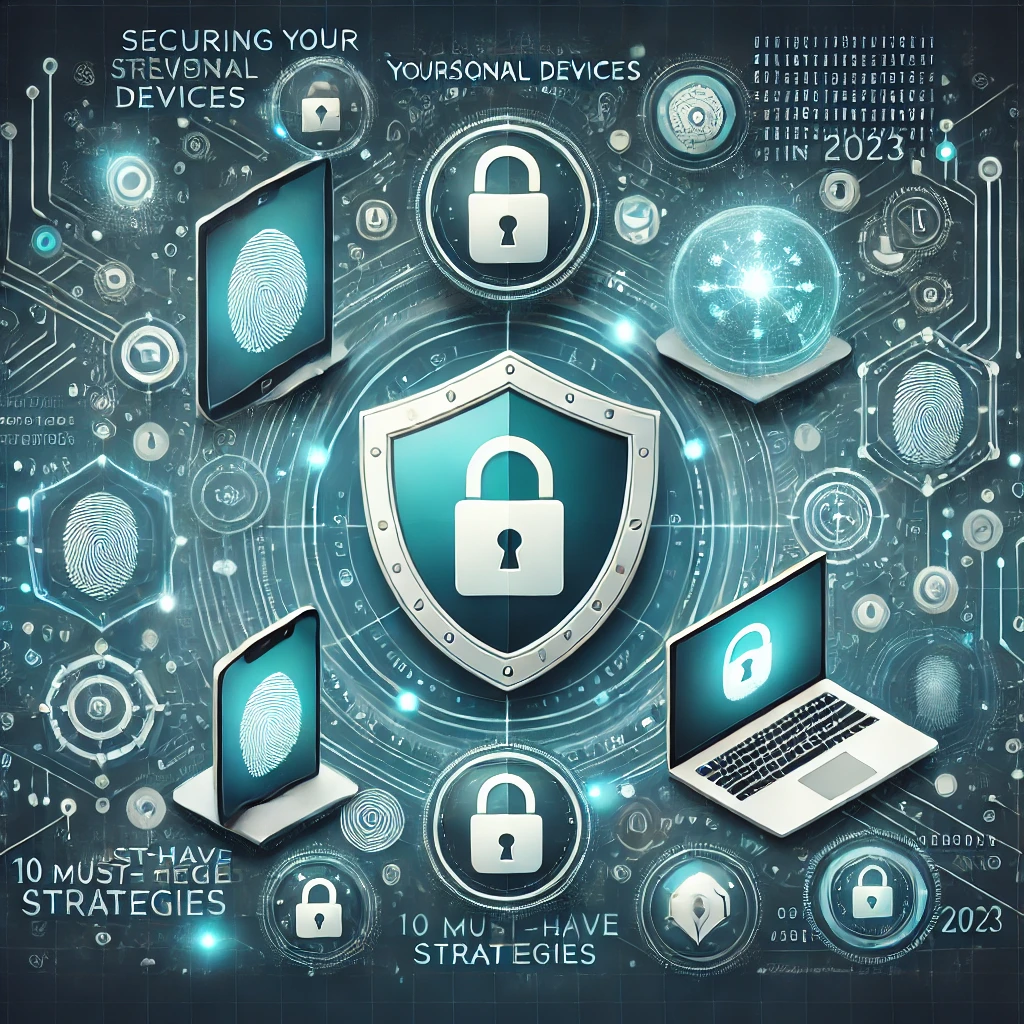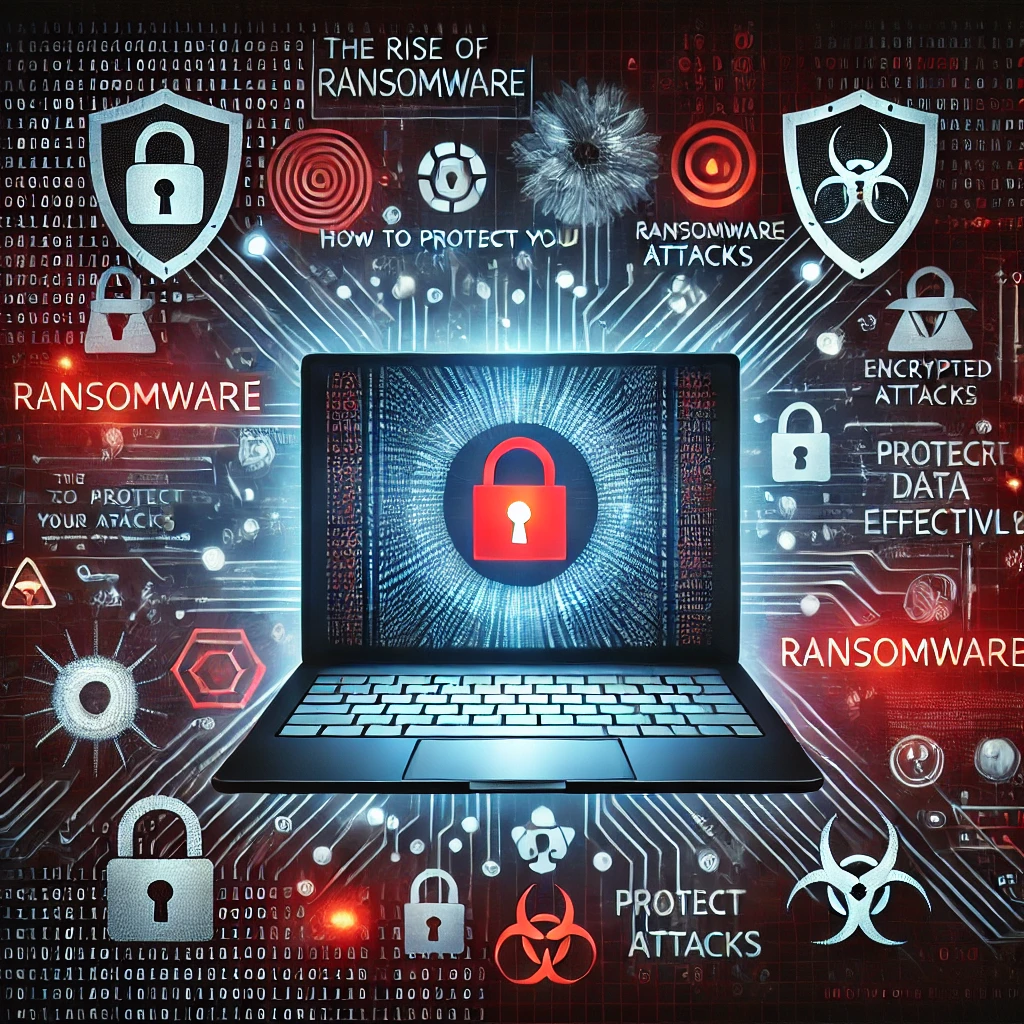Introduction
In our hyper-connected world, cybersecurity has become more important than ever. With workplaces shifting online, social interactions taking place on digital platforms, and financial transactions happening with just a few clicks, we have opened countless doors for cybercriminals to exploit. Whether you are a seasoned IT professional or someone exploring the basics of online safety, understanding the foundations of cybersecurity is crucial to protect your information, digital assets, and overall peace of mind.
In this extensive guide, we’ll explore what cybersecurity truly means, how common threats evolve, and what you can do to safeguard yourself against them. Grab a cup of coffee, settle in, and let’s dive deep into the core principles of protecting your digital life.
Table of Contents
- What Is Cybersecurity?
- Why Cybersecurity Matters More Than Ever
- Common Cybersecurity Threats
- Types of Cyber Attacks
- Core Principles of Cybersecurity
- Top Cybersecurity Tools and Methods
- Building a Personal Cybersecurity Toolkit
- Cybersecurity Best Practices for Businesses
- Future Trends in Cybersecurity
- Frequently Asked Questions (FAQs)
- Conclusion
1. What Is Cybersecurity?
Cybersecurity is the practice of defending computers, servers, mobile devices, electronic systems, networks, and data from malicious attacks. It encompasses a variety of processes, technologies, and best practices designed to protect our digital footprints against unauthorized access, data theft, or damage to hardware, software, and the information they store.
Think of cybersecurity as a multilayered defense mechanism. Each layer addresses different facets of potential threats. From antivirus software on your personal devices to complex intrusion detection systems in large corporations, cybersecurity involves proactive and reactive strategies to mitigate risks.
Key Takeaway: At its core, cybersecurity is about keeping you and your data safe—period.
2. Why Cybersecurity Matters More Than Ever
It’s no secret that technology and the internet have radically changed how we live, work, and communicate. Consequently, the level of personal and organizational data transferred, stored, and processed online has skyrocketed. As data volumes and connectivity continue to grow, cybercriminals find new ways to exploit vulnerabilities for personal gain or malicious intent.
- Rapid Digital Transformation: Businesses worldwide are embracing digital tools—cloud computing, remote collaboration, e-commerce platforms—to stay relevant. A single data breach could bring operations to a halt.
- Financial Impact: Global losses from cybercrime are projected to reach trillions of dollars in the coming years. Whether you’re an individual losing a few hundred dollars to a phishing scam or a multinational corporation facing millions in damages, the economic burden can be profound.
- Reputation and Trust: A successful cyber attack on a company can erode customer confidence, tarnish its brand image, and lead to long-term financial consequences far beyond the immediate recovery costs.
- Privacy Concerns: With so much personal data—from medical records to browsing history—being collected, stored, and shared, the potential for privacy violations is immense.
In short, cybersecurity isn’t just an IT issue; it’s a fundamental pillar of personal and organizational well-being in the digital age.
3. Common Cybersecurity Threats
The term “threat” in cybersecurity refers to anything that has the potential to inflict harm or exploit vulnerabilities in a system. Let’s explore some of the most common threats faced by individuals and businesses alike:
- Phishing
- Attackers send fraudulent emails or messages disguised as legitimate requests to trick recipients into revealing personal information or clicking malicious links.
- Often, these messages mimic well-known brands or use urgent language.
- Malware
- Umbrella term for malicious software such as viruses, worms, ransomware, and spyware that can infiltrate devices to steal data or cause damage.
- Malware can spread through infected downloads, malicious email attachments, or compromised websites.
- Ransomware
- A specific kind of malware that encrypts a victim’s data and demands payment in exchange for restoring access.
- Ransomware attacks can cripple organizations, leading to downtime or lost revenue.
- Social Engineering
- The act of manipulating individuals into divulging confidential information.
- Attackers often exploit human psychology through pretexting, baiting, or tailgating.
- Denial of Service (DoS) Attacks
- Cybercriminals overwhelm a system, server, or network with illegitimate traffic, making it inaccessible to legitimate users.
- In the Distributed Denial of Service (DDoS) variant, multiple compromised systems join forces to overload the victim’s resources.
- Zero-Day Exploits
- Attacks leveraging unknown or unpatched vulnerabilities in software.
- “Zero-day” implies that developers have had zero days to fix the flaw before it’s exploited.
These threats evolve constantly, and new ones emerge regularly. Staying informed about how they operate and what you can do to stop them is crucial.
4. Types of Cyber Attacks
A cyber attack is any attempt to expose, alter, disable, destroy, steal, or gain unauthorized access to or make unauthorized use of a digital asset. Below are some widespread attack techniques:
- Brute Force Attacks
- Hackers systematically guess login credentials through trial-and-error, testing multiple combinations until they succeed.
- Man-in-the-Middle (MitM) Attacks
- Attackers intercept communications between two parties, often on unsecured Wi-Fi networks, to eavesdrop or inject malicious content.
- SQL Injection
- Involves inserting malicious SQL statements into forms, search bars, or input fields on a website to manipulate or steal data from databases.
- Cross-Site Scripting (XSS)
- Attackers inject malicious scripts into otherwise benign and trusted websites, enabling them to steal cookies or session data.
- Email Spoofing
- Attackers send emails with forged sender addresses to trick recipients into thinking the communication is from a trusted source.
- Supply Chain Attacks
- Rather than attacking a target directly, hackers compromise a third-party vendor or partner to gain indirect access to the primary target.
Understanding these attack vectors is the first step in developing a robust defense strategy. When you know how attackers might attempt to break in, you can better reinforce your walls.
5. Core Principles of Cybersecurity
Cybersecurity strategies hinge on certain fundamental principles—often referred to as the CIA Triad (Confidentiality, Integrity, Availability). Let’s break them down:
- Confidentiality
- Ensuring that information is accessible only to those authorized to access it.
- Encryption, strong passwords, and access controls maintain confidentiality.
- Integrity
- Information must be accurate and unchanged from its original form during storage or transit.
- Techniques like checksums, hashes, and version control ensure data integrity.
- Availability
- Information and resources should be accessible to authorized users whenever needed.
- Strategies like regular backups and redundant systems uphold availability.
Cybersecurity frameworks like NIST, ISO/IEC 27001, and COBIT expand on these principles to provide guidance for organizations of varying sizes.
6. Top Cybersecurity Tools and Methods
While human vigilance remains key, certain tools and methods can automate or enhance security measures:
- Antivirus and Anti-Malware Software
- Programs like Norton, McAfee, or Bitdefender actively scan and remove threats.
- Firewalls
- Monitors and filters incoming and outgoing traffic, blocking suspicious sources.
- Encryption Tools
- End-to-end encryption in messaging apps like Signal or WhatsApp ensures that only the sender and recipient can read the messages.
- Tools like VeraCrypt protect local files and folders on your device.
- Virtual Private Networks (VPNs)
- Secures internet connections by creating an encrypted tunnel, hiding your online activities from snoopers.
- Intrusion Detection and Prevention Systems (IDPS)
- Monitors network or system activities for malicious actions or policy violations, taking action to block or report them.
- Multi-Factor Authentication (MFA)
- Requires users to provide two or more verification factors (something you know, have, or are) to gain access.
- Patch Management
- Keeping software up to date by installing patches and updates quickly to close security loopholes.
- Penetration Testing
- Ethical hackers simulate attacks on a system to discover vulnerabilities before malicious actors do.
Implementing these tools and strategies isn’t just for enterprise-level organizations. Individuals can also adopt many of these measures to vastly improve their online safety.
7. Building a Personal Cybersecurity Toolkit
Even if you don’t run a business, being personally proactive about cybersecurity is vital. Here’s how you can start building your personal cybersecurity toolkit:
- Strong Passwords: Use passphrases combining uppercase and lowercase letters, numbers, and symbols. Avoid predictable sequences like “1234” or personal info like birthdays.
- Password Managers: Tools like LastPass, 1Password, or Bitwarden generate and securely store passwords, so you don’t have to rely on memory or sticky notes.
- MFA Everywhere: Wherever possible, enable multi-factor authentication—this adds a layer of security beyond just a password.
- Secure Browsers and Extensions: Opt for reputable browsers like Firefox or Brave, and install privacy-focused extensions such as HTTPS Everywhere or uBlock Origin.
- Email Hygiene: Be cautious about opening attachments or clicking links from unknown senders. Verify the authenticity of any suspicious emails before responding.
- Backup Strategy: Regularly back up important files to external drives or secure cloud storage. This can save you in case of a ransomware attack or hardware failure.
- Social Media Caution: Oversharing personal details can make you vulnerable to social engineering. Adjust your privacy settings and use strong passwords for your social accounts.
- Device Security: Protect smartphones, tablets, and laptops with a PIN, password, or biometric lock. Install reputable security apps and keep your operating systems updated.
By habitually incorporating these steps into your daily life, you significantly reduce your risk profile and keep your digital identity secure.
8. Cybersecurity Best Practices for Businesses
From small startups to global conglomerates, cybersecurity is a shared concern for all businesses. Here’s a roadmap for organizations aiming to foster a secure digital ecosystem:
- Develop a Cybersecurity Policy
- Clearly define guidelines regarding passwords, data access, and acceptable use of company resources.
- Employee Training
- Offer regular security awareness training. Teach employees how to spot phishing emails, handle sensitive data, and respond to potential breaches.
- Access Controls
- Adopt the principle of least privilege: give individuals only the level of access they truly need.
- Robust Network Security
- Segment your network to reduce the spread of malware. Use firewalls, VPNs for remote workers, and regularly monitor for intrusions.
- Incident Response Plan
- Prepare a playbook for dealing with cyber incidents. Assign roles, establish communication protocols, and conduct practice drills.
- Regular Audits and Risk Assessments
- Conduct vulnerability scans and penetration tests regularly. Address discovered weak points quickly to maintain compliance with data privacy regulations.
- Encryption and Data Protection
- Encrypt sensitive data both at rest and in transit. Ensure backups are kept offsite or in the cloud, and test data restoration procedures.
- Zero Trust Approach
- Don’t assume any entity—inside or outside the network—is trustworthy. Validate every device, identity, and access request.
In addition, staying informed about emerging trends and regulatory requirements (like GDPR or HIPAA) will help businesses maintain a resilient cybersecurity posture.
9. Future Trends in Cybersecurity
The cyber threat landscape evolves just as quickly as technology itself. Here’s a glance into future trends that will likely shape cybersecurity in the coming years:
- Artificial Intelligence (AI) and Machine Learning (ML)
- AI-driven security tools can automate threat detection and response, reducing the time it takes to mitigate an attack.
- Conversely, cybercriminals use AI to craft more sophisticated phishing emails or malware.
- Quantum Computing
- As quantum computing matures, it can break current cryptographic algorithms. Conversely, post-quantum cryptography will become a priority.
- Internet of Things (IoT) Security
- Connected devices—smart TVs, home assistants, wearables—will increase in number, necessitating strict security protocols to prevent large-scale botnet attacks.
- Cloud Security
- With more businesses migrating to the cloud, shared responsibility models will become the norm. Providers must assure robust security measures, and clients need to configure services securely.
- Biometric Authentication
- Passwords might gradually be replaced or supplemented by biometrics—fingerprints, facial recognition, or iris scans. It’s more secure, but also raises privacy concerns.
- 5G and Edge Computing
- Faster and more reliable networks offer new possibilities but also new security complexities, requiring edge-specific protection strategies.
As we move further into a tech-driven future, cybersecurity will remain dynamic and require constant vigilance. Being aware of these trends allows individuals and organizations to prepare ahead of potential challenges.
10. Frequently Asked Questions (FAQs)
- What’s the difference between cyber threats and cyber attacks?
Cyber threats are potential risks or vulnerabilities that can be exploited, whereas cyber attacks are the actual incidents where these threats materialize or are carried out. - How often should I update my passwords?
It’s generally recommended to update your passwords every three months, but the frequency can vary based on personal preference or specific industry compliance requirements. - Are free antivirus programs enough to protect my PC?
Some free antivirus software can provide a basic layer of protection. However, for comprehensive security, especially in a business environment, it’s often wise to invest in a premium solution. - What is multi-factor authentication (MFA)?
MFA requires more than one form of verification (something you know, something you have, or something you are) before granting access. This might include a password plus a texted code or biometric authentication. - Should small businesses worry about cybersecurity?
Absolutely. Small businesses are often prime targets because they typically have fewer security measures in place compared to larger enterprises. - How do I protect my Wi-Fi at home?
Use a strong password, enable WPA3 (if available), keep your router’s firmware updated, and consider guest networks for visitors. - What’s the best way to avoid phishing scams?
Be vigilant with emails from unknown senders. Check domain names carefully, hover over links to see their actual URLs, and never click suspicious attachments. - Can smartphone hacking be prevented?
Regularly updating your smartphone’s OS, installing apps only from trusted sources, and using secure Wi-Fi networks can mitigate the risk of hacking. - What is social engineering?
Social engineering exploits human psychology to gain unauthorized access or information. Examples include phishing, pretexting, and tailgating. - Is cybersecurity a good career path?
Definitely. Cybersecurity professionals are in high demand, and the field offers competitive salaries and continuous growth opportunities.
11. Conclusion
Understanding the basics of cybersecurity is no longer optional—it’s essential for everyone, from casual internet users to CEOs of multinational firms. We’ve explored key threats, types of attacks, and best practices that shield personal and corporate data. We’ve delved into tools, the CIA Triad, and up-and-coming trends shaping the industry.
If you take away one message from this guide, let it be the concept of constant vigilance. Cybersecurity isn’t static; it’s a living discipline that evolves as swiftly as the technology it aims to protect. Equip yourself with strong passwords, use MFA, stay updated on the latest threats, and cultivate a security-minded culture around you.
By doing so, you’ll be well on your way to embracing a safer digital future—for yourself, your loved ones, and your organization.


